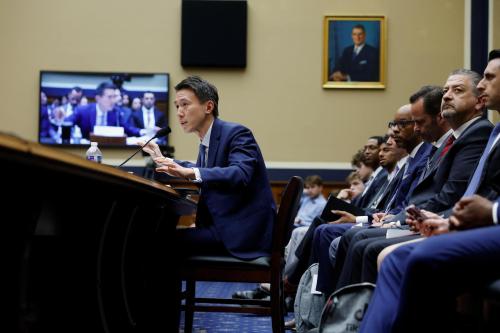The past year has seen many instances of technology companies expanding rapidly into new markets only to later face legal challenges. In November, the New York attorney general instructed two daily fantasy sports websites, Fanduel and Draft Kings, to cease operations statewide because of the sites’ similarity to illegal online gambling. All technology companies employ a large number of software engineers that create and maintain the websites and smartphone apps that deliver their services to customers. What happens when these businesses begin to view legal restrictions as another bug to fix?
Testing software code, legal code
When testing a piece of software, engineers look for instances where a program fails to perform as expected. Depending on their stringency, tests could involve anything from repeated usage to an intentional effort to “break” the software. A basic test would find errors that a normal user might encounter, while the more intensive testing tries to expose all possible errors. Once exposed, errors are corrected in the underlying software code, and the process repeats until the software meets specified quality standards.
The strategies that technology companies employ in software testing have parallels in their expansion plans. Instead of testing software code, companies are testing regulatory codes everywhere they go. Each geographical market in a new city, state, or country represents another test case for the legitimacy of a business model. If companies face a legal challenge, then they will either have to adjust their service for local regulations, or they will invalidate these regulations. Either outcome is a lesson that a company can apply to every other market.
Regulations could be changed by the ruling of a regulatory agency, a court case, or new legislation. Technology companies have also reached out to their customers to lobby policymakers on behalf of the company’s interests. Earlier this year, Uber successfully reversed a planned cap on the number of new drivers it could add in New York City. Airbnb successfully campaigned against a ballot initiative in San Francisco that would have limited the number of days that rooms could be rented out on its platform. Draft Kings and Fanduel want to replicate this success in their case in New York by declaring themselves “too big to ban”.
Customers are constituents
This view of legal obstacles as just another bug to fix can clash with the original purpose of regulations. Rather than see regulations as a barrier to some business activity, it is instructive to consider why they exist in the first place. Regulations designed to promote competition or protect consumers are just as important as the services being offered by companies. It’s often the case that regulations can be improved to accommodate new business models instead of completely scrapped for being outdated. A company’s customer is also a regulator’s constituent, so the goals of convenience must go hand in hand with protection.
Just as technology companies can appreciate the function that regulators perform, regulators can also glean insight from the software testing model. Before rules go into effect, they should be scrutinized for potential implementation problems. The lifespan of a rule should also be considered: a constantly shifting set of rules would be just as onerous as one that did not change at all. After an appropriate period of time has passed, regulators should revisit and adjust rules to fit changing market conditions. Rather than see themselves in conflict, technology companies and regulators can teach each other something about delivering convenience, competition, and customer protections.


Commentary
Technology companies troubleshoot local regulations
December 3, 2015